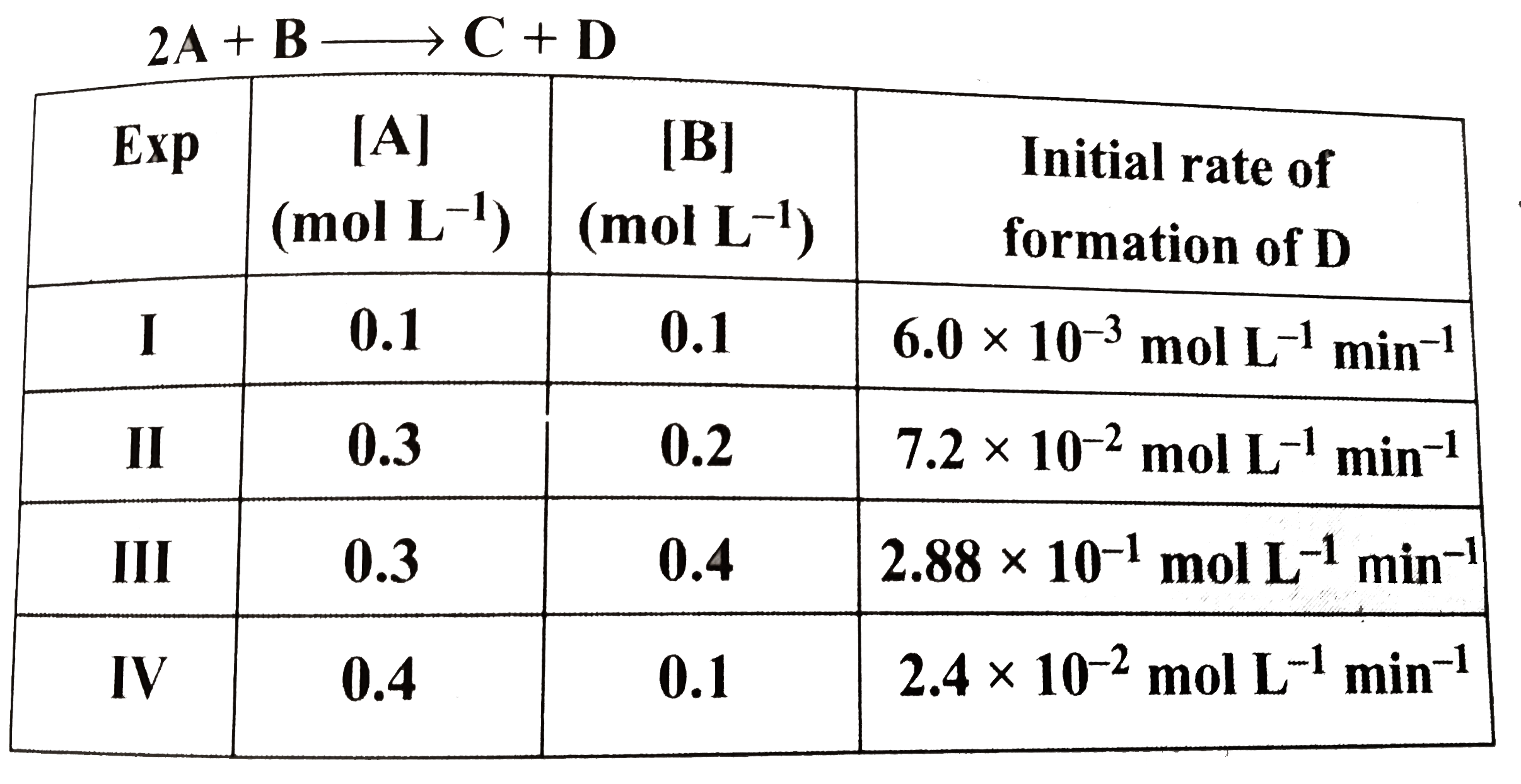The reaction A+B→C has zero order. What is the rate equation?
r=k[A]0[B0]=k
Topper's Solved these Questions
- BOOK - ICSECHAPTER - CHEMICAL KINETICSEXERCISE - EXERCISE (PART- II (DESCRIPTIVE QUESRTIONS) B. SHORT ANSWER QUESTIONS )119videos
CHEMICAL KINETICS
- BOOK - ICSECHAPTER - CHEMICAL KINETICSEXERCISE - EXERCISE (PART- II (DESCRIPTIVE QUESRTIONS) C.LONG ANSWER QUESTIONS )54videos
CHEMICAL KINETICS
- BOOK - ICSECHAPTER - CHEMICAL KINETICSEXERCISE - EXERCISE (PART- I (OBJECTIVE QUESRTIONS) D. MATCH THE FOLLOWING )3videos
CHEMICAL KINETICS
- BOOK - ICSECHAPTER - BIOMOLECULESEXERCISE - ISC EXAMINATION QUSTIONS (PART-I)(DESCRIPTIVE QUESTIONS)21videos
BIOMOLECULES
- BOOK - ICSECHAPTER - CHEMISTRY IN EVERYDAY LIFEEXERCISE - EXERCISE (PART - II (DESCRIPTIVE QUESTIONS) (LONG ANSWER QUESTIONS))19videos
CHEMISTRY IN EVERYDAY LIFE
Similar Questions
The reaction A+B → C has zero order. What is the rate equation?
View SolutionThe reaction A+B→C has zero order. What is the rate equation?
View SolutionThe reaction A+B→C has zero order. What is the rate equation?
View SolutionThe reaction A+B → C. has zero order. What is the rate equation?
View SolutionThe reaction A+B→C has zero order. Write rate equation.
View SolutionThe reaction A+B→C has zero order. Write rate equation.
View SolutionThe reaction A+B→C has zero order. Write rate equation.
View SolutionThe following rate data were obtained at 303K for the following reaction:
2A+B→C+D

What is the rate law? What is the order with respect to each reactant and the overall order? Also calculate the rate constant and write its units.View SolutionThe rate of reaction A+B→ Product is given by the equation r=k[A][B]. If B is taken in large excess, the order of the reaction would be
View SolutionFor a chemical reaction A→B, it is found that the rate of reaction doubles when the concentration of A is increased 4 times. What is the order of reaction ? Suggest the rate law also.
View Solution

